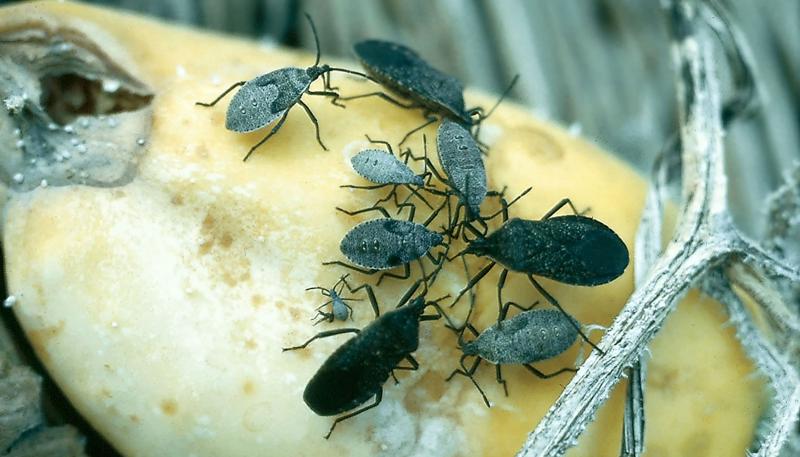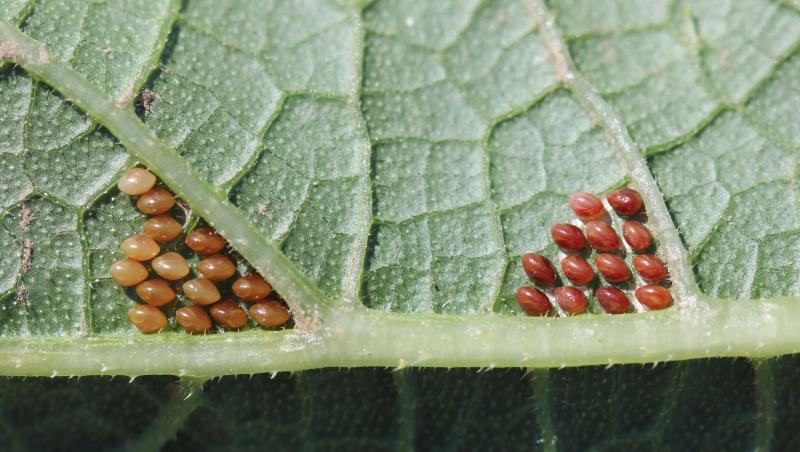
Squash bugs are now becoming a headache for gardeners across South Dakota. Most of the reports so far have been on zucchini plants, but squash bugs feed on pumpkins and other types of squash as well. Injury caused by extensive feeding appears as wilting and may result in the death of infested plants.
Squash bugs are commonly found in groups on the leaves, stems, and fruit of cucurbits (Figure 1). When disturbed, they produce a foul scent and scurry away quickly. Peak squash bug activity occurs in late summer and continues until the first frost.
Profile

Squash bugs first appear in early summer when overwintering adults emerge to mate and lay eggs. The females lay clusters of spherical bronze-colored eggs on the stems and undersides of the leaves between the leaf veins (Figure 2). Squash bug nymphs hatch in about 2 weeks and immediately begin feeding. Over the next 4 to 6 weeks, the nymphs complete their development and mature into adults. The adults continue to feed until the first frost when they seek shelter to overwinter. There can be one or two generations per year depending on the length of the growing season.
Management
Methods for preventing squash bug infestations include sanitation (cleaning up plant debris), crop rotations, trap crops (e.g., blue hubbard squash), and using physical barriers like floating row covers until the first female flowers bloom.
When plants are young, check the stems and leaves for egg clusters and crush any that are observed. This is a good preliminary strike that helps reduce squash bug populations later in the year. Regularly fertilize and water the plants to make them healthier and more tolerant to feeding injury if an outbreak does occur.
In the case of a heavy infestation, an insecticide treatment may be necessary. Insecticides should be applied early while squash bugs are in the nymph stage because the adults are much more resilient and difficult to kill. Several products are labeled for squash bug management, including carbaryl, permethrin, and spinosad. Insecticides should be applied to the leaves and at the base of infested plants. If the plants are flowering, avoid treating the flowers as this can harm bees and other visiting pollinators.
Gardens with squash bugs this year are likely to have them again next year since these insects don’t move far from where they overwinter. If you routinely battle squash bugs, consider taking a year or two off from planting cucurbits or make sure to scout early and often in the 2020 growing season.


